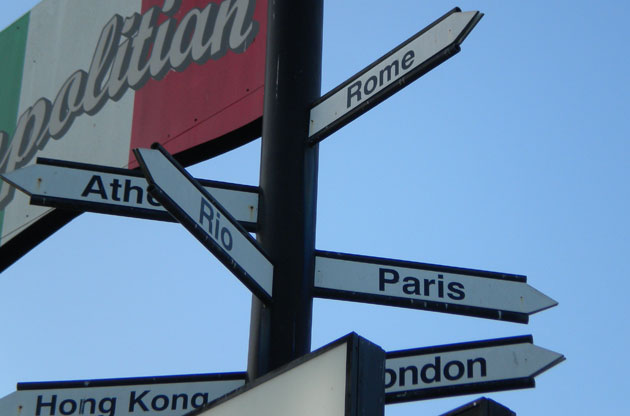 What are we supposed to do about a sign that tells us that a crane is working overhead? Are we supposed to move away? If so, why not barricade the area or construct a pedestrian detour? Are we supposed to look up and cross when we feel that it is safe to do so? Or is it a legal requirement so that if we happen to be flattened by a plummeting boulder, we can’t sue? I’d prefer more explicit instructions, such as, ‘Do not come within spray-painting distance of this sign, lest something fall on you, and it’s lights out!’
What are we supposed to do about a sign that tells us that a crane is working overhead? Are we supposed to move away? If so, why not barricade the area or construct a pedestrian detour? Are we supposed to look up and cross when we feel that it is safe to do so? Or is it a legal requirement so that if we happen to be flattened by a plummeting boulder, we can’t sue? I’d prefer more explicit instructions, such as, ‘Do not come within spray-painting distance of this sign, lest something fall on you, and it’s lights out!’
Accuracy is important. I learned this while publishing a novel called ‘Z’. Within its 100,000 words are references to medical, scientific, military, nuclear, nautical, electronic, political, biological, and technical activities. There are readers out there who don’t care how you phrase a sentence. Yet there are readers who will argue the point based on physics, practicality, and possibility. They will calculate every possible angle to prove the author wrong. For this reason, ‘Z’ took two years longer to publish while I checked thousands of facts with every possible expert. I had to speak with a bugging expert at an intelligence agency to determine if my listening devices in the room could pick-up the conversation in which my characters were engaging. I had to speak with a ballistics expert and a marksman and a sniper to work out how many rounds can be fired using that weapon in that situation from that angle. Every detail in this work of fiction, had to be factual. With this in mind, and now that I have been well and truly initiated into the world of fiction, please forgive me for noticing this sign below. No-one who has any grasp of geography, coupled with geometry, could cope with the arrows that suggest that Rome goes hither and Paris goes thither. If you plot those angles, and take London to be the bearing, that would put Rome in Russia and Paris in Sydney.
 For other similar observations, click on the links below:
For other similar observations, click on the links below:
![]()



Comments are closed.